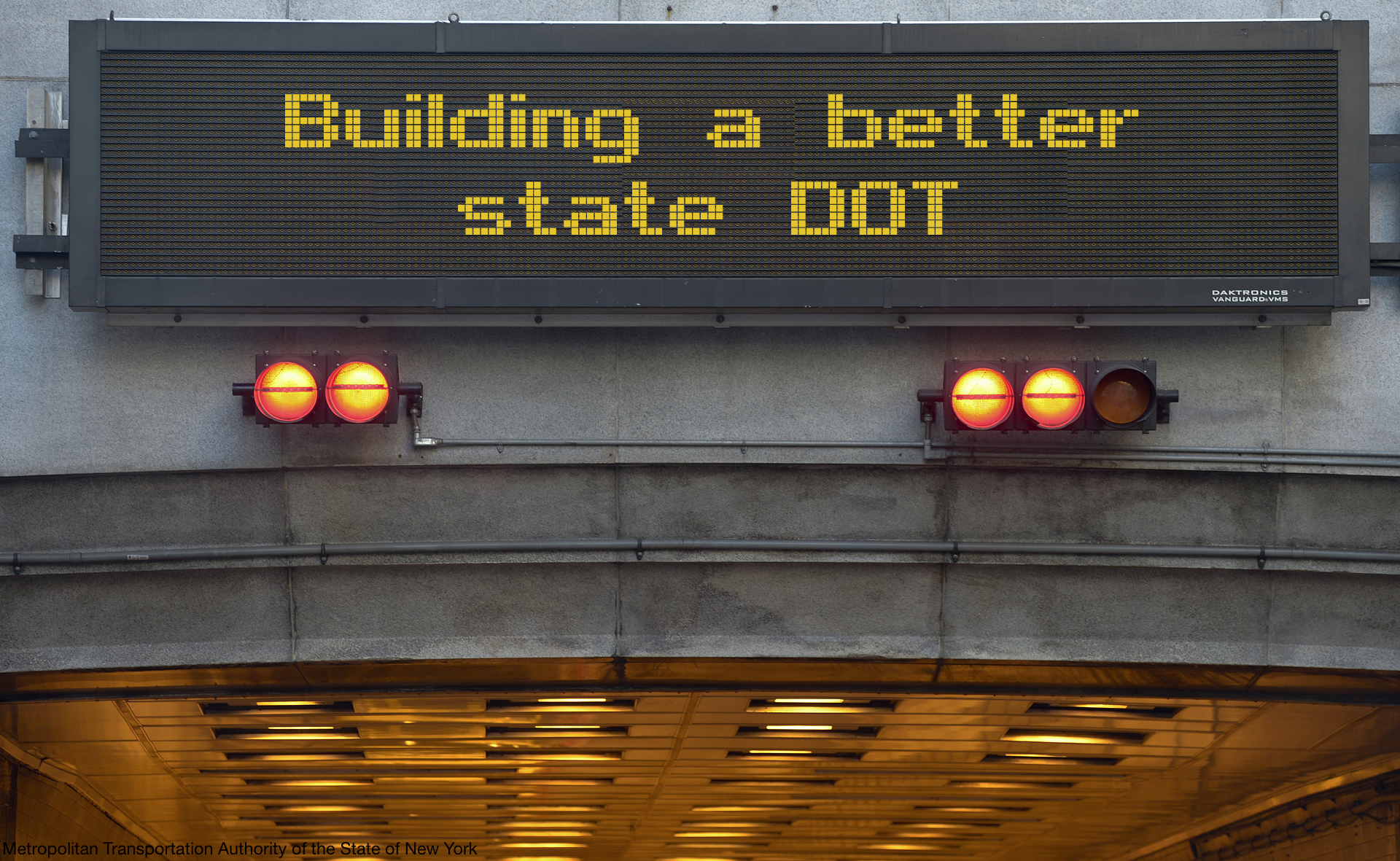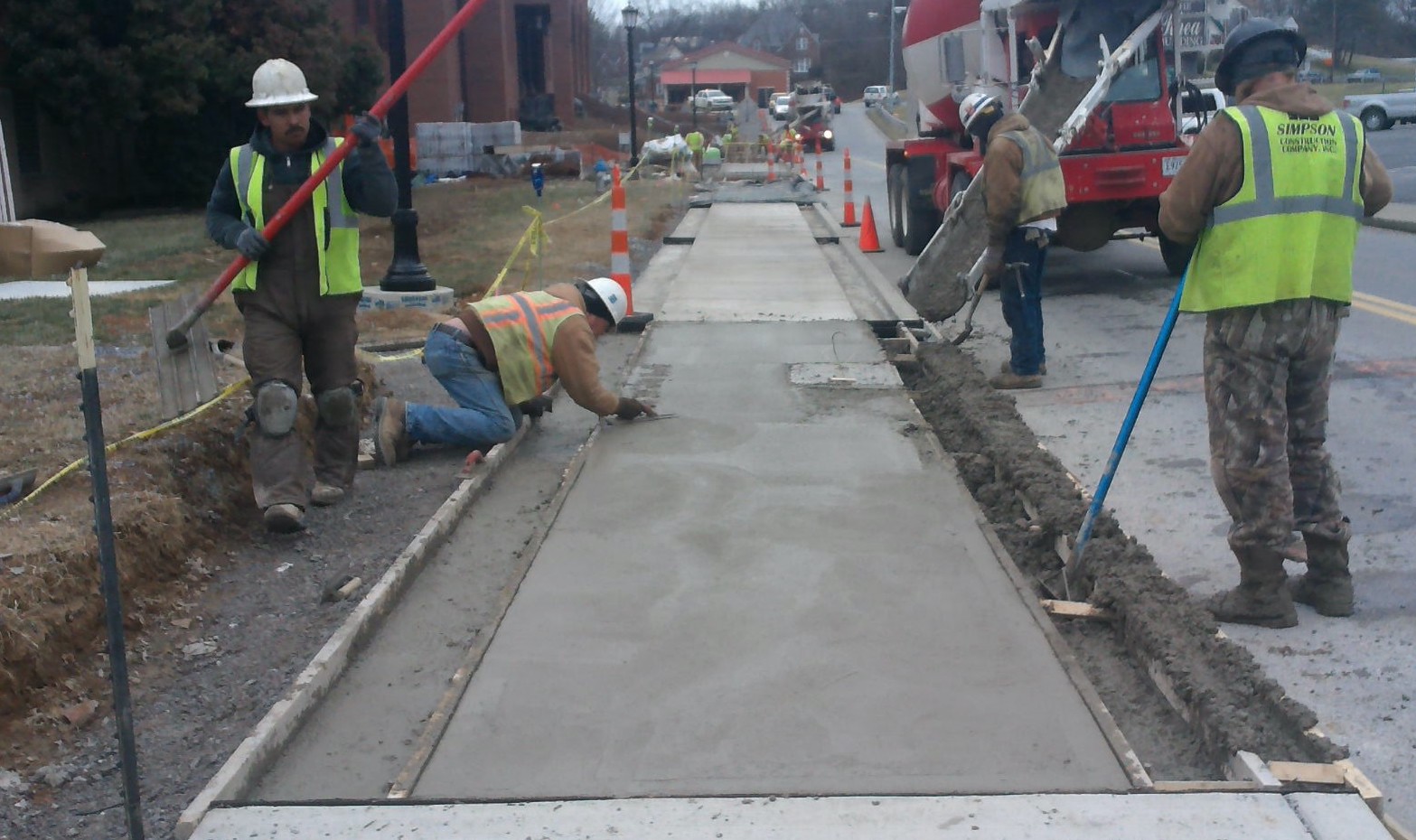
News
By Rayla Bellis, March 19, 2019
 epidemic of pedestrian deaths. But that can be hard to do when most DOTs are still set up to build roads that prioritize high-speed car travel, even if that jeopardizes the safety of some of the people using those roads. Tennessee DOT is working to change that through a comprehensive approach to Complete Streets.
epidemic of pedestrian deaths. But that can be hard to do when most DOTs are still set up to build roads that prioritize high-speed car travel, even if that jeopardizes the safety of some of the people using those roads. Tennessee DOT is working to change that through a comprehensive approach to Complete Streets.
This is the sixth and final post in a series about states that are finding success through what's known as practical solutions, a way for transportation departments to meet changing demands and plan, design, construct, operate, and maintain context-sensitive transportation networks that work for all modes of travel. Read the first, second, third, forth, or fifth post.
State DOTs were created to build highways, and while their missions are broadening, most still largely operate as highway agencies thanks to policies, standards, and funding mechanisms that have been in place for decades. These institutional practices are difficult to change, but change is necessary to reverse the nation’s epidemic of pedestrian deaths.
We have encountered a number of states that have adopted Complete Streets policies in order to make their roads safer for everyone who uses them, only to find that nothing really changes. DOTs still build the same dangerous roads because the practices and assumptions that prioritize high-speed vehicle travel are so deeply embedded. The policies change but the practices don’t.
So how can a state DOT actually make meaningful changes? They have to bring a Complete Streets approach into all of the internal machinery that makes their agency run. This process of reexamining every facet of how they operate is exactly the kind of comprehensive approach that we call practical solutions.
For an example of this comprehensive approach, see exhibit A: Tennessee DOT. TDOT was the first of nine DOTs we worked with on practical solutions. At that time, TDOT had adopted a "multimodal access" policy to improve safety and access for people walking, biking, and taking transit, but recognized that the policy alone would have limited impact. TDOT has since taken (and continues to take) steps to update its practices across the department to make roads safer for everyone, like giving staff tools to change how they design roads, finding opportunities to improve safety even in routine repaving projects, and coming up with better ways to prioritize investments.
Here are some of the ways TDOT is working to change—steps every DOT should take.
Asking the right questions during scoping and design
When too little time is spent conducting field research and engaging stakeholders upfront, states end up defining the purpose of a project too narrowly, potentially missing opportunities to change the design of the road to improve safety or access for people traveling by modes other than a car.
Last year, TDOT took action to address this by publishing a new Multimodal Project Scoping Manual. It also added a new multimodal design chapter and multimodal standard drawings to its roadway design standards to help staff make key decisions in the early stages of a project. Together, these resources provide guidance on which types of travelers should be prioritized based on the community context and how to use a flexible design approach that responds to those needs.
The standard drawings, in particular, are crucial. While many state DOTs rely on such drawings for roadway design, most do not have a comprehensive library of drawings with Complete Streets features, putting the onus on engineers to incorporate those features. TDOT’s standard drawings now provide engineers with a straight forward tool to incorporate those facilities.
Many DOT engineers prefer to rely on planning office guidance, do not have the experience to choose a design that will work well for people walking or biking in a given context, or don’t feel confident that their leadership will back them up if they do. TDOT’s new guidance is already changing the types of scopes staff put forward by giving them additional confidence and helping them bring the right considerations into their projects from the beginning.
 A crosswalk and bus stop along Nolensville Pike creates a safer crossing for people walking or rolling in Nashville.
A crosswalk and bus stop along Nolensville Pike creates a safer crossing for people walking or rolling in Nashville.
Looking for opportunities with every type of project
TDOT’s new scoping guidance is a great step toward getting features like sidewalks, crosswalks, pedestrian refuge islands, or bicycle facilities included in larger capital projects when they’re needed. However, state DOTs rarely put the same level of consideration into routine repaving projects, which make up a huge portion of a DOT's work. Roadway repair projects are typically funded through different pots of money and have a more streamlined process with less community engagement. As a result, most states simply default to repaving a road with the same layout it had previously.
But TDOT has recognized that this approach to routine repair is a major missed opportunity. States can often improve conditions for people walking and biking at relatively low cost when they resurface a road—for example, by restriping the road with narrower lanes to slow down traffic or adding a bike lane. Unfortunately, without taking the time to engage the public or the local agencies first, the state may not know what changes would be beneficial or needed until it is too late to include them in the project.
To bring more of these opportunities to light, TDOT recently switched from a one-year list of upcoming projects to a three-year list they share more proactively with regional and local agencies so they have the chance to raise needs that could be addressed as a part of the project (including through a local funding contribution). Upcoming resurfacing projects will also be posted online in map format to make it easier for residents to see that a project is coming up in their neighborhood.
This new process makes it so both TDOT and local stakeholders can raise a need or opportunity in time to integrate it into an upcoming project’s scope, and it has already resulted in better coordination. For example, cities have been able to raise upcoming utility projects to coordinate the timing with TDOT’s resurfacing projects, reducing costs to both the state and the locality by avoiding tearing up the road twice in short succession. It’s a clear win-win, but few other DOTs have taken this step.
Prioritizing the most important needs
Many DOTs haven’t done the legwork to measure the things that matter for people walking and biking in a comprehensive way. As a result, when it comes to evaluating which projects to fund, they can’t sufficiently prioritize those needs. As we have discussed previously, level-of-service (a measure of vehicle delay) has been the dominant performance measure for roadway design, and continues to drive transportation agencies toward overbuilt, expensive, car-oriented highways and sprawling development.

One of TDOT’s recent innovations has been the development of a new “Multimodal Suitability Index” to help evaluate and prioritize potential projects for funding based on needs and opportunities for people walking, biking, and riding transit, based on four factors:
- Safety: Frequency of crashes involving bicyclists and pedestrians.
- Equity: Location of the project in relation to populations that may have more difficulty accessing resources, including low-income and non-white populations, people under age 18 and over 64, and zero-car households.
- Demand: Whether the project is located in an area with the potential for high pedestrian activity if conditions were safer (based on population density and proximity to schools, retail, jobs, and transit). I.e, would people walk here if we made the street safer for them to do so?
- Supply: An evaluation of the road’s existing characteristics that impact pedestrian and bicycle safety and comfort, like the speed cars are traveling, and gaps in sidewalks and bike facilities.
While this is a new tool for TDOT, it has major potential to elevate needed investments for people walking and biking, helping TDOT put their multimodal access policy into practice. TDOT could (and perhaps should) use it to help select projects for funding across a variety of programs to ensure multimodal needs are met. The tool can also be customized to the goals of specific programs by modifying the weighting of the four factors; for example, TDOT could choose to place a greater emphasis on equity for a given program. It’s a helpful, straightforward framework that other states should adopt, and TDOT was able to develop it in-house.
While TDOT still has work to do to make Tennessee’s roads safe for everyone, they are moving in the right direction with the steps above.
For more examples from TDOT and other leading states, see the in-depth memos.
Related News

© 2025 Smart Growth America. All rights reserved
Site By3Lane Marketing










